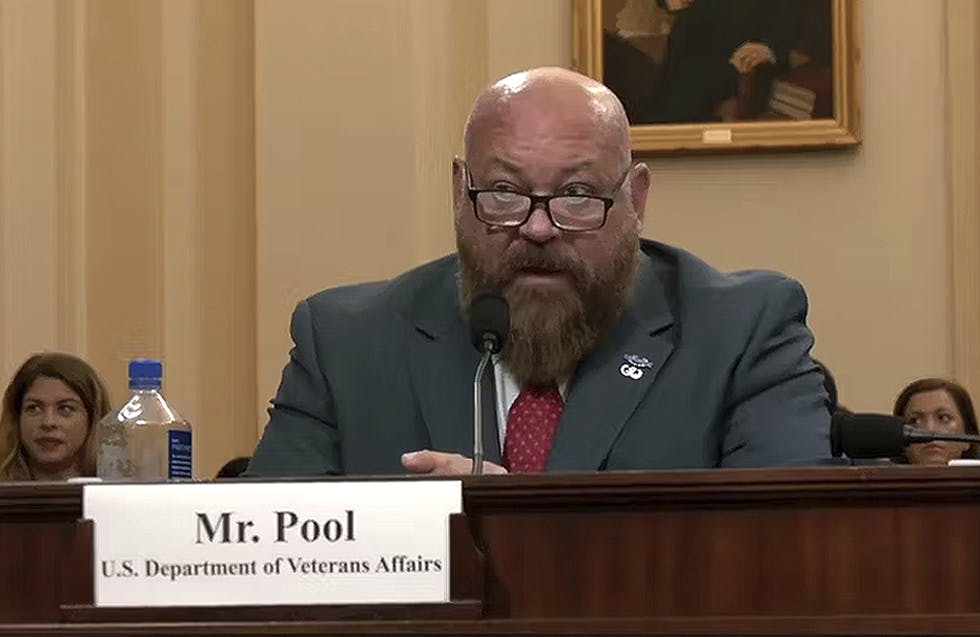TSA is Modernizing Security Screening For Less Contact
Artificial intelligence, facial recognition and machine learning could streamline and accelerate technology amid the pandemic.

COVID-19 forced many federal agencies to overhaul their IT strategies and transform the way they do work. But for some agencies, like the Transportation Security Administration (TSA), COVID-19 is changing the way they accomplish their mission.
To help slow the spread of the novel coronavirus, TSA began changing the security screening process in airports and is now exploring new innovative technologies like artificial intelligence, facial recognition and machine learning to facilitate a smoother, contactless and more efficient security-screening experience for passengers and TSA agents, said TSA Acquisition Program Management Assistant Administrator Mario Wilson.
“A lot of tech advancements are really looking at not only the traditional threats we’re used to looking at, but also potential future ones,” Wilson said at a FedInsider webinar last week. “We have been very aggressive at not only identifying baggage, but also how do we … continue to improve on that technology?”
A facial-recognition pilot project recently deployed to Reagan Washington National Airport scans passengers’ faces and IDs instead of requiring passengers to hand their ID to a TSA agent — potentially spreading COVID-19.
Wilson said TSA also invested in computational typography (CT) scanning systems to improve bag screening.
“We acquired 300 of those CT systems and have 150 deployed today,” he said. (All 300 will deploy by the end of the year.) “We’re very actively looking at upgrades to our advanced imaging tech and improved software to reduce alarms and the contact rate. We’re in the process of upgrading the checked baggage systems. We’re looking at how much can we reduce the alarm rates. That will result in fewer needs to open passengers’ bags, which ultimately helps the entire experience and the speed.”
Within industry, there is opportunity for TSA to not only stem the spread of a dead virus, but also to improve the security screening process overall.
“I absolutely think it’s feasible, with e-gates, biometrics, that really gets the contact out of this process,” said Jim Moos, president of Leidos’ science and technology solutions arm, Civil Group, at the event. “Advanced algorithms, AI and machine learning — the computer can really help detect the threats. … Less touching, less pat downs, increased efficiency at the checkpoints. That’ll be the checkpoint of the future, not only in the U.S. but all over the world.”
Moos noted that Leidos recently provided TSA with antimicrobial trays for the screening line and a UV disinfectant capability that cleans the trays before they are handed to the next passenger. These types of COVID-related changes will stay even after the pandemic threat lessens.
“We’re really ensuring our officers and the public feel safe to fly again,” said Melissa Conley, senior advisor for requirements and capability analysis at TSA, at the event. “We’re looking at UV lighting for cleaning and sanitizing the bins — I think that will last. All the cleaning standards we’re putting in place — those will last as well. Those acrylic shield barriers, at those high touchpoints, I think those are going to last as well. Some of the face shields or surgical masks, I could see those being slowly phased out when a vaccine is at play.”
Before TSA deploys these types of technologies in airports, the Transportation Security Lab at the Department of Homeland Security Science & Technology Directorate is responsible for testing and approving them first. The lab is actively exploring ways to incorporate AI and machine learning into the TSA security-screening process to improve passenger and bag scanning, and reduce rates of false alarms.
“Let’s say we’re doing baggage screening. We have a bag that typically has explosives in, but actually has one of those mini umbrellas inside,” Barry Smith, manager of the lab’s Applied Research Division, told GovernmentCIO Media & Research. “Now maybe the algorithm keys in on the umbrella and says there’s an explosive in that bag. There are things we don’t know.”
Smith wants the algorithms to be capable of accurately differentiating between a hairdryer and a gun, or an explosive and a mini umbrella, for example. Two techniques that accomplish this are “white box” and “black box,” he said.
“In white box, the algorithm is completely open to us where we can see what they do and see if there’s some weird feature they’re keying on that has nothing to do with the threat, like mistaking a hairdryer for a gun,” he said. “In the black-box technique, we change the input to see the output and kind of massage the methodology — through trial and error.”
To test these algorithms and tweak them appropriately, the lab needs access to very large data sets, which is a challenge. Synthetic data sets, which create rapid analysis technologies, could be a solution, he said.
“What if we could take synthetic data and make a model person and inject a threat on the person that has all the physical characteristics of the threat? Then we could speed up testing,” he added.
Although they did not provided any statistics, reducing false alarm rates and accelerating the scanning process could result in substantial cost savings, said Barry Masters, the lab’s branch chief for spectroscopy development, testing and evaluation.
The lab is still exploring new methods for testing AI and machine-learning algorithms to ensure the algorithms are highly accurate when deployed at TSA.
“There are vulnerabilities we’re not aware of when we test,” Masters said. “That’s the whole reason we’re looking for new methods to train these algorithms. What we don’t know is what feature is extracted from the training data. We’re looking at open-source code to see exactly what those algorithms are keying on to see if they’re keying in on the right item, like the umbrella in the bag.”
The lab’s research in this area might not only benefit TSA, but also other agencies within DHS and beyond, such as the Customs and Border Protection, the Secret Service, the Coast Guard, the Defense Department and the Department of State, Smith said.
As TSA continues to update and modernize its security-screening process to limit person-to-person contact and reduce false alarm rates, the lab hopes AI and machine learning will become mainstays in the process soon.
“It’s ‘research and development’ — so we don’t have any fast answers yet,” Smith said.
This is a carousel with manually rotating slides. Use Next and Previous buttons to navigate or jump to a slide with the slide dots
-

VA CIO Targets Modern IT and Smarter Workforce Alignment
Agency leaders told lawmakers they are focused on trimming legacy systems and restructuring its workforce to streamline operations.
3m read -

Pentagon's $200M AI Contracts Signal Broader Effort to Transform Talent
The Army is leveraging Silicon Valley, reservist programs and new hiring strategies to integrate critical digital skills in its ranks.
5m read -

AI Foundations Driving Government Efficiency
Federal agencies are modernizing systems, managing risk and building trust to scale responsible AI and drive government efficiency.
43m watch -

Inside DOD’s Push to Grow the Cyber Workforce Through Academia
Diba Hadi gives her first interview since becoming principal director of the DOD’s Cyber Academic Engagement Office.
15m listen -

Agencies Tackle Infrastructure Challenges to Drive AI Adoption
Federal agencies are rethinking data strategies and IT modernization to drive mission impact and operational efficiency as new presidential directives guide next steps.
5m read Partner Content -

Generative AI Demands Federal Workforce Readiness, Officials Say
NASA and DOI outline new generative AI use cases and stress that successful AI adoption depends on strong change management.
6m read -

The Next AI Wave Requires Stronger Cyber Defenses, Data Management
IT officials warn of new vulnerabilities posed by AI as agencies continue to leverage the tech to boost operational efficiency.
5m read -

Federal CIOs Push for ROI-Focused Modernization to Advance Mission Goals
CIOs focus on return on investment, data governance and application modernization to drive mission outcomes as agencies adopt new tech tools.
4m read -

Fed Efficiency Drive Includes Code-Sharing Law, Metahumans
By reusing existing code instead of rewriting it, agencies could dramatically cut costs under the soon-to-be-enacted SHARE IT Act.
5m read -

Agencies Push Data-Driven Acquisition Reforms to Boost Efficiency
New initiatives aim to increase visibility of agency spending, improve data quality and create avenues to deploy solutions across government.
5m read -

Data Transparency Essential to Government Reform, Rep. Sessions Says
Co-Chair of the Congressional DOGE Caucus Rep. Pete Sessions calls for data sharing and partnerships to reduce waste and improve efficiency.
5m read -

DOD Turns to Skills-Based Hiring to Build Next-Gen Cyber Workforce
Mark Gorak discusses DOD’s efforts to build a diverse cyber workforce, including skills-based hiring and partnerships with over 480 schools.
20m listen
















